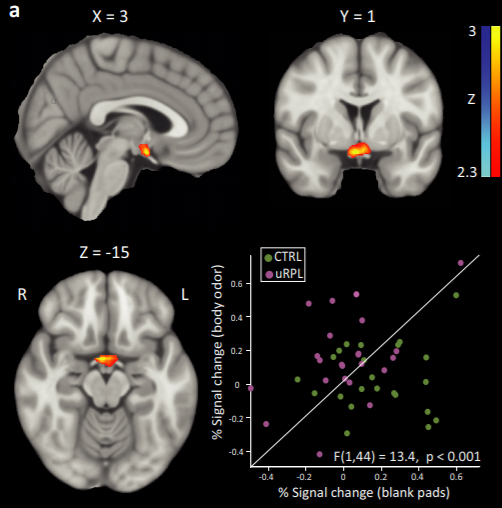Scientists have found the secret to felines’ finesse at sniffing out food, friends and foes. A complex collection of tightly coiled bony airway structures gets the credit, according to the first detailed analysis of the domestic cat’s nasal airway.
Tag: sense of smell
Study Explores Link Between Shark Nose Shape, Size and Sensitivity of Smell
Differences in sharks’ olfactory systems are of interest not only because of their known incredible sense of smell but also because they have been around since before the dinosaurs. They managed to thrive in every known marine habitat for millions of years – their sense of smell may have been key. A study is the first to quantify olfactory organ morphology by examining rosette shape and other internal structures among a diverse set of shark species using dissections, phylogenetic comparisons, and a fairly new technique, called diffusible iodine‐based contrast‐enhanced computed tomography imaging. Results reveal that the organs did not change in shape or number of lamellae throughout the life stages, suggesting that olfaction is a key sensory modality throughout the life of elasmobranch fishes.
An alarming prevalence of smell, taste loss during COVID’s delta surge
The loss of smell and taste with a COVID-19 infection during the delta surge was a prevalent symptom and wasn’t prevented by vaccination, new research suggests. The study also found some people with the earliest COVID infections had loss of these senses months later and didn’t even realize it.
New research “sniffs out” how associative memories are formed
Has the scent of freshly baked chocolate chip cookies ever taken you back to afternoons at your grandmother’s house? Has an old song ever brought back memories of a first date? The ability to remember relationships between unrelated items (an odor and a location, a song and an event) is known as associative memory.
Scientists on the scent of flavor enhancement
With hopes to capitalize on the smell factor in flavor development, researchers are exploring how the route an aroma takes to get to the olfactory system, through the nose or the back of the throat, influences our response to the scent in question.
This stinks: New research finds sense of smell and pneumonia linked
An acute loss of smell is one of the most common symptoms of COVID-19, but for two decades it has been linked to other maladies among them Parkinson’s disease and dementia. Now, a poor sense of smell may signify a higher risk of pneumonia in older adults, says a team of Michigan State University researchers.
Using candy to sniff out probable cases of COVID-19
Scientists have proposed that using a cheap and simple product – hard candy – to screen for the loss of taste and smell in populations at risk for COVID-19 exposure may help detect probable positive cases in otherwise asymptomatic people.

Repeated Pregnancy Loss May Be Tied to the Olfactory System, Weizmann Institute Scientists Find
Pregnant mice typically miscarry when exposed to the odor of a male who did not father their pups. Weizmann research provides evidence that the same effect occurs in women with unexplained repeated pregnancy loss (uRPL), who apparently process messages about male body odor differently. This could help identify causes and prevention of uRPL.

New Study on Development of Parkinson’s Disease is ‘On the Nose’
Scientists suggest that the initial impact of environmental toxins inhaled through the nose may induce inflammation in the brain, triggering the production of Lewy bodies that can then be spread to other brain regions. However, the relationship linking olfactory dysfunction and Parkinson’s disease development remains unclear. New findings from a study add weight to this theory and identify a critical signaling molecule that may be key to the domino effect kicked off by nasal inflammation.
Self-Monitoring Your Sense of Smell May Help Detect Coronavirus
Reduced sense of smell is an early COVID-19 symptom for some. Weizmann Institute olfactory system expert Prof. Noam Sobel has developed SmellTracker, an online test for monitoring our own sense of smell. SmellTracker may help diagnose the virus early, and even distinguish between strains.

Mosquitoes are drawn to flowers as much as people — and now scientists know why
Scientists have identified the chemical cues in flowers that stimulate mosquitoes’ sense of smell and draw them in. Their findings show how cues from flowers can stimulate the mosquito brain as much as a warm-blooded host — information that could help develop less toxic repellents and better traps.